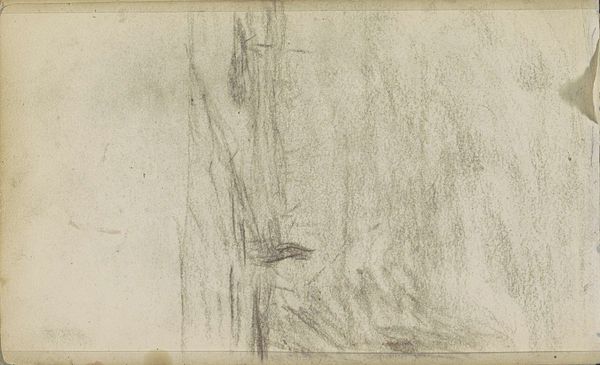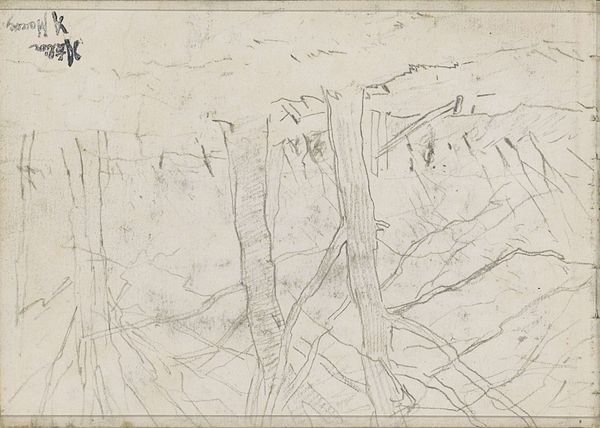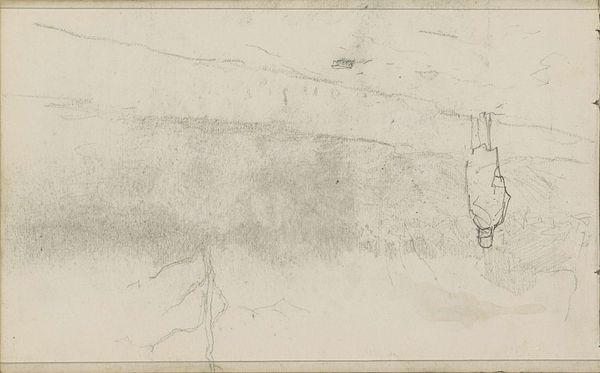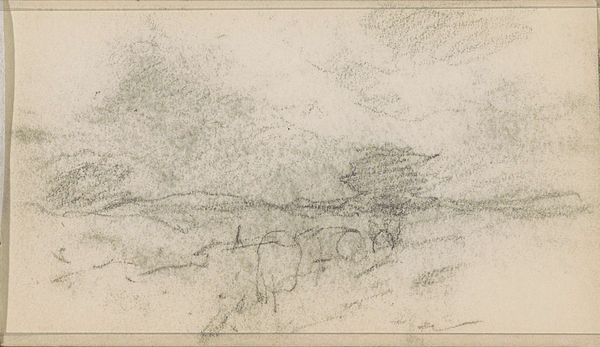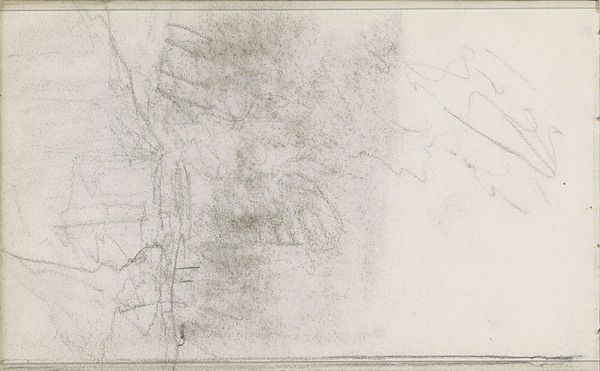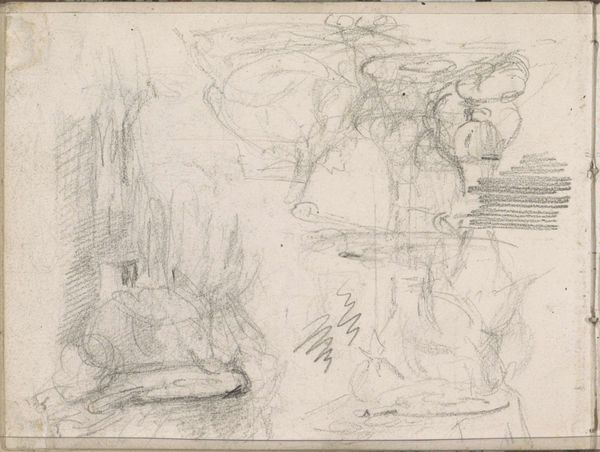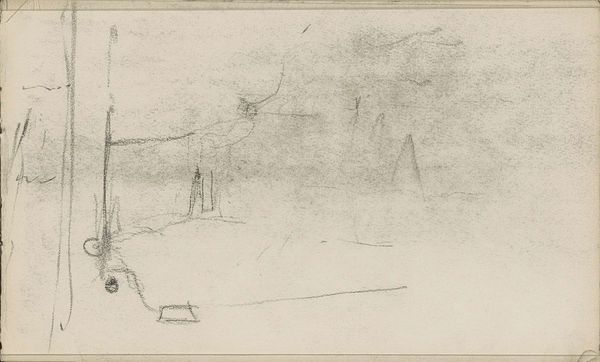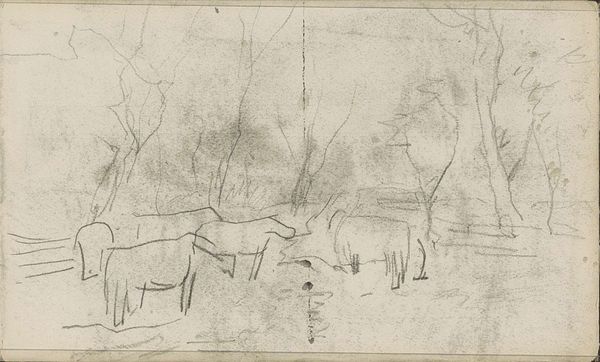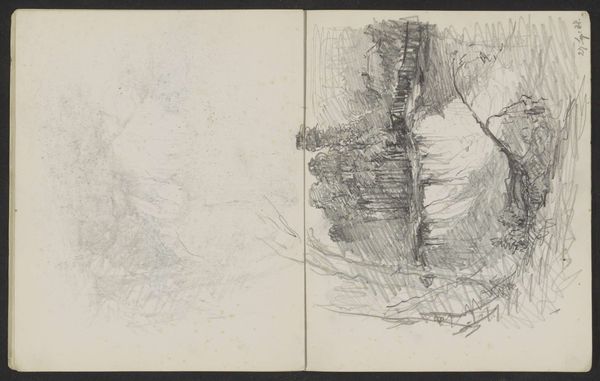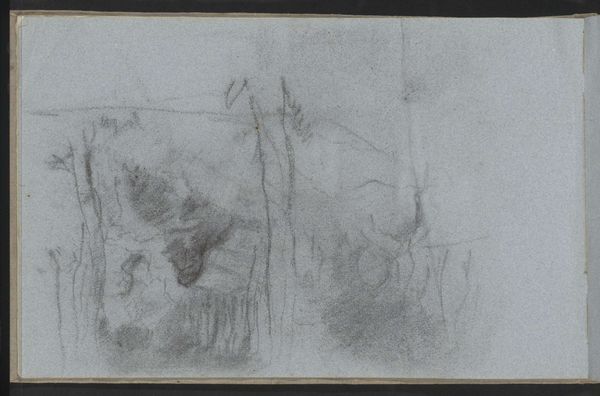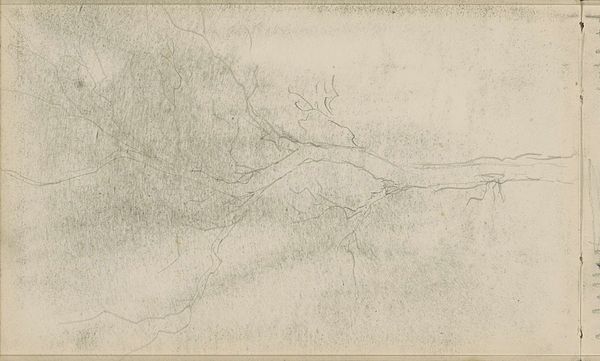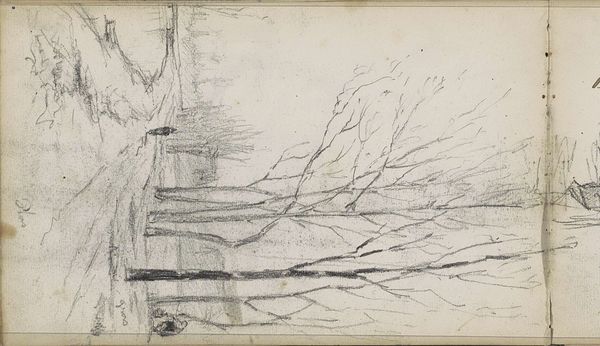
drawing, pencil
#
drawing
#
pencil sketch
#
landscape
#
sketch
#
pencil
#
realism
Copyright: Rijks Museum: Open Domain
Curator: Here we have "Studie" a pencil drawing by Anton Mauve, likely created between 1848 and 1888. It's currently housed here at the Rijksmuseum. Editor: My first impression is one of profound quietude, despite the rather agitated, almost frantic mark-making. Curator: It’s fascinating how Mauve uses the starkness of pencil on paper to evoke such a vivid sense of place. The tonal gradations create depth and suggest atmosphere despite the work’s minimalist approach. I wonder about his process—how the linear strokes coalesce to depict, what I presume, a serene Dutch landscape. Editor: Absolutely, but to call this "minimalist" might erase a larger colonial history of Dutch landscape art from this era. Who inhabited, labored and perhaps was erased from this supposedly 'serene' vista? What are the socio-political implications of this apparent untouched wilderness in the Netherlands when the work was made? Curator: A provocative point. Though, formally, one might consider the interplay of light and shadow as paramount. See how Mauve contrasts the density of the foliage with the open space. His use of hatching creates variations of texture and intensity which, to me, are compelling compositional elements. Editor: True, his technique demonstrates a clear artistic understanding. But can we truly divorce art from its historical situation? Did Mauve, through similar idealized landscapes, possibly contribute to an artistic framework that overshadowed the exploitation of rural populations and their environments? A close reading must acknowledge these broader cultural dynamics at play. Curator: It is a valuable interpretation. But it's crucial not to exclusively frame artworks solely within oppressive dynamics. The inherent beauty and artistry on view should be recognized as an entry point toward further dialogues around societal questions, if that makes sense. The careful attention Mauve gave the landscape, his acute perception of light and shadow, that to me is testament of a sensitive, perhaps enlightened, soul. Editor: Fair enough; but our job as responsible observers should also require that this perception co-exist with the broader framework, right? That way, it may enhance rather than curtail true engagement with works of art. Curator: Indeed! Art appreciation involves understanding, not disregarding, contextual elements in a never-ending process of questioning. Thank you! Editor: Likewise! It is important to remember how interconnected all art forms can be, and how it continues to represent power.
Comments
No comments
Be the first to comment and join the conversation on the ultimate creative platform.

